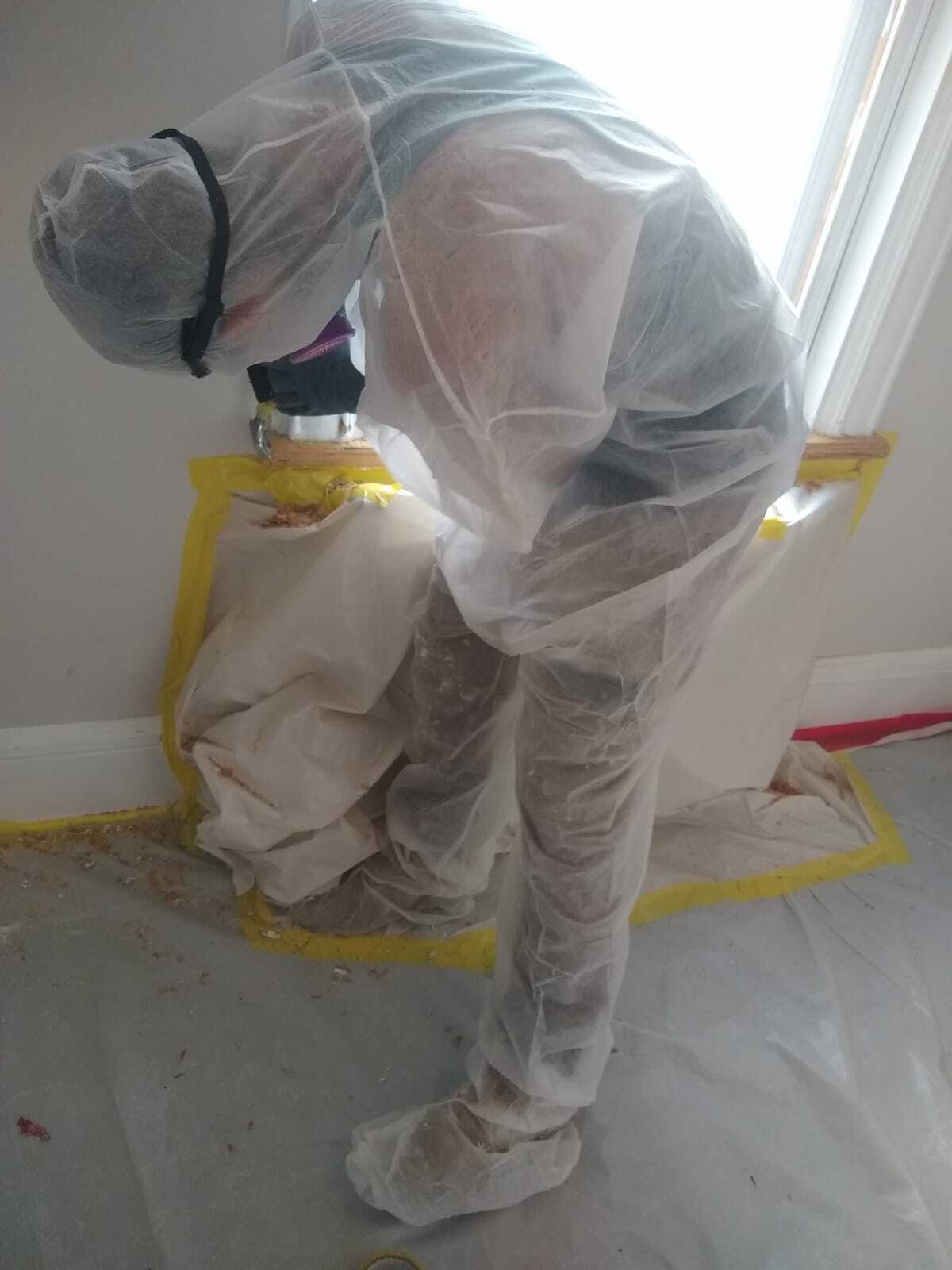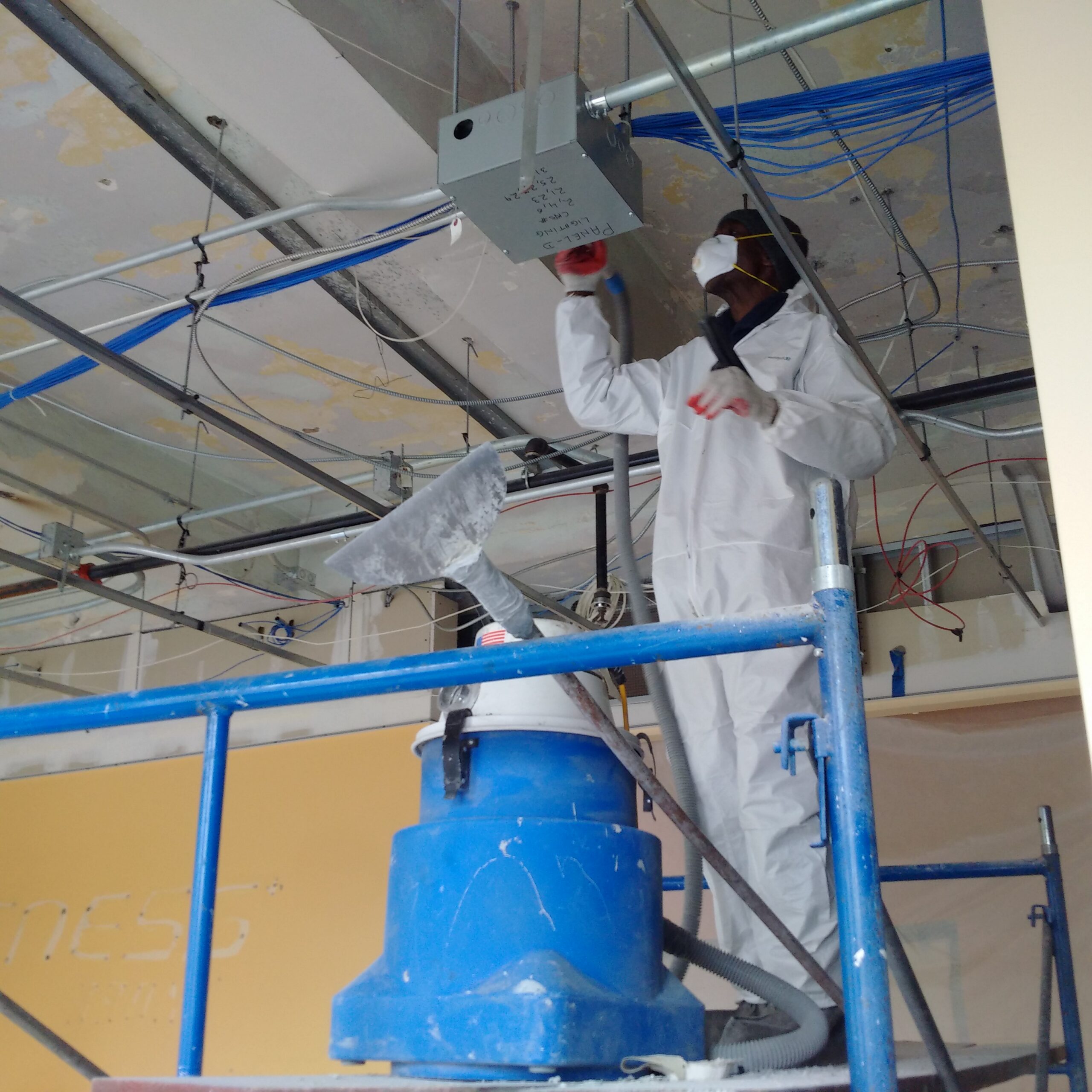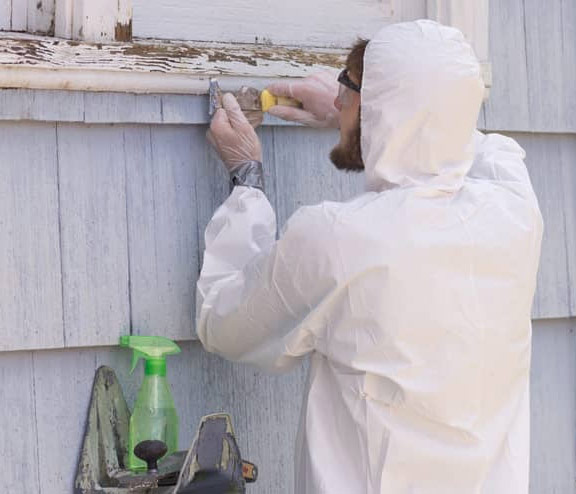Expert Lead Paint Removal Company-- Serving All NYC Boroughs
Expert Lead Paint Removal Company-- Serving All NYC Boroughs
Blog Article
Essential Tools and Strategies for Reliable Lead Offense Cleaning
Dealing with lead infractions effectively requires a thorough method that blends the right tools with critical approaches. Simultaneously, the usage of specialized cleanup devices, such as HEPA vacuum cleaners and lead-specific cleaning agents, is critical for comprehensive pollutant elimination. Effective containment techniques, consisting of plastic bed linen and negative air pressure systems, are necessary to protect against the spread of dangerous materials.
Individual Safety Tools
Individual safety devices (PPE) is an important part in the efficient administration of lead contamination clean-up. The vital PPE for lead clean-up includes respirators, safety clothing, handwear covers, and eye defense.
Respirators, specifically those furnished with HEPA filters, are vital for filtering system airborne lead particles, preventing breathing. Appropriate fit and seal checks are important to ensure their effectiveness. Safety garments, including coveralls and non reusable matches, stops lead dust from sticking to workers' garments, reducing the threat of additional contamination. Gloves, typically constructed from nitrile or latex, protect the skin from direct call with lead, while security goggles or full-face guards secure the eyes from dust and particles.
Additionally, rigorous training on the proper usage and upkeep of PPE is important. Employees should be enlightened on donning and doffing treatments to stay clear of contamination. Routine examinations and replacements of PPE parts are necessary to preserve their safety capabilities, making sure a safe and compliant cleaning operation.
Specialized Clean-up Devices

Another necessary tool is the wet/dry vacuum cleaner, which can successfully tidy up both dirt and liquid pollutants. These vacuum cleaners frequently include HEPA filters to give an additional layer of security. Damp cleans or tack towels are also vital for surface area cleansing; they are specifically developed to catch and hold lead fragments, reducing the risk of spreading contamination.
For more stubborn deposits, specialized lead-removal cleansing representatives are called for. These representatives are created to damage down lead particles, making them simpler to remove. Scrub brushes with durable bristles can help in this procedure, particularly on harsh surface areas where lead dirt has a tendency to stick a lot more strongly.
Additionally, encapsulants are used to seal lead-contaminated surfaces, preventing the release of lead dust. These specialized paints and coverings are designed to comply with various substrates, providing a lasting remedy for lead control.
Reliable Control Techniques
Efficient containment approaches are important in reducing the spread of lead contamination throughout clean-up tasks. Carrying out robust control techniques ensures that lead bits do not migrate to untouched click over here areas, consequently safeguarding both employees and the environment (DOH & HPD Lead Violation Removal NYC).

To enhance control, encapsulants can be applied to surface areas that are not being eliminated or interrupted. These specialized finishes bind lead dust, lowering its accessibility for resuspension. In addition, all workers must use appropriate Individual Protective Devices (PPE), consisting of respirators and disposable matches, to avoid contamination spread.
Safe Disposal Practices
Making sure safe disposal practices is an important part in the management of lead contamination clean-up. Appropriate disposal minimizes the threat of lead re-entering the atmosphere and threatening public wellness (DOH & HPD Lead Violation Removal NYC).
Moving lead waste requires adherence to strict guidelines. Utilizing accredited contaminated materials service providers makes certain that the materials are handled responsibly. Documentation, including manifests detailing the type and quantity of waste, should accompany shipments to track the waste from the site why not try these out of origin to its last disposal location.
Designated unsafe waste disposal centers are outfitted to take care of lead-contaminated products securely. These centers typically utilize sophisticated techniques such as stabilization, solidification, or chemical treatment to neutralize the lead prior to disposal. Landfilling in specialized, lined locations that stop leachate from polluting groundwater is a common practice for last disposal.
Normal training for workers associated with lead waste disposal is crucial to preserve safety and security standards and stop unintended exposure. By sticking to these methods, organizations can substantially minimize the environmental and health effects related to lead contamination.
Regulatory Compliance Tips

Following governing conformity is extremely important in the successful execution of lead contamination cleaning. Comprehending and adhering to government, state, and regional regulations makes certain not only the safety and security and health and wellness of individuals however additionally the legal and economic health of the cleanup organization. The Environmental Defense Agency (EPA) establishes stringent standards, such as the Lead Remodelling, Repair Service, and Painting (RRP) Regulation, which mandates proper qualification and training for contractors dealing with lead-based activities.
Conformity starts with an extensive assessment of applicable regulations and laws. Organizations must remain upgraded on any kind of legislative adjustments, which can be facilitated via normal training sessions and subscribing to sector updates. Paperwork is another important conformity aspect; preserving comprehensive documents of all tasks, including examination reports, worker training logs, and disposal manifests, is vital.
Moreover, involving with certified lead assessors or risk assessors makes sure that lead threats are correctly identified and alleviated. Companies must enforce making use of Personal Safety Equipment (PPE) and guarantee that safety and security protocols are purely adhered to. Finally, clear interaction with stakeholders, including employees, customers, and regulative bodies, will certainly cultivate a culture of conformity and liability, eventually adding to a safer and a lot more efficient lead cleanup procedure.
Conclusion
Reliable lead offense cleanup requires the combination of specialized tools and critical techniques to ensure safety and security and efficiency. Personal safety devices (PPE) safeguards workers from direct exposure, while secure disposal methods and strict adherence to regulatory compliance are crucial for sensibly managing harmful waste.
Report this page